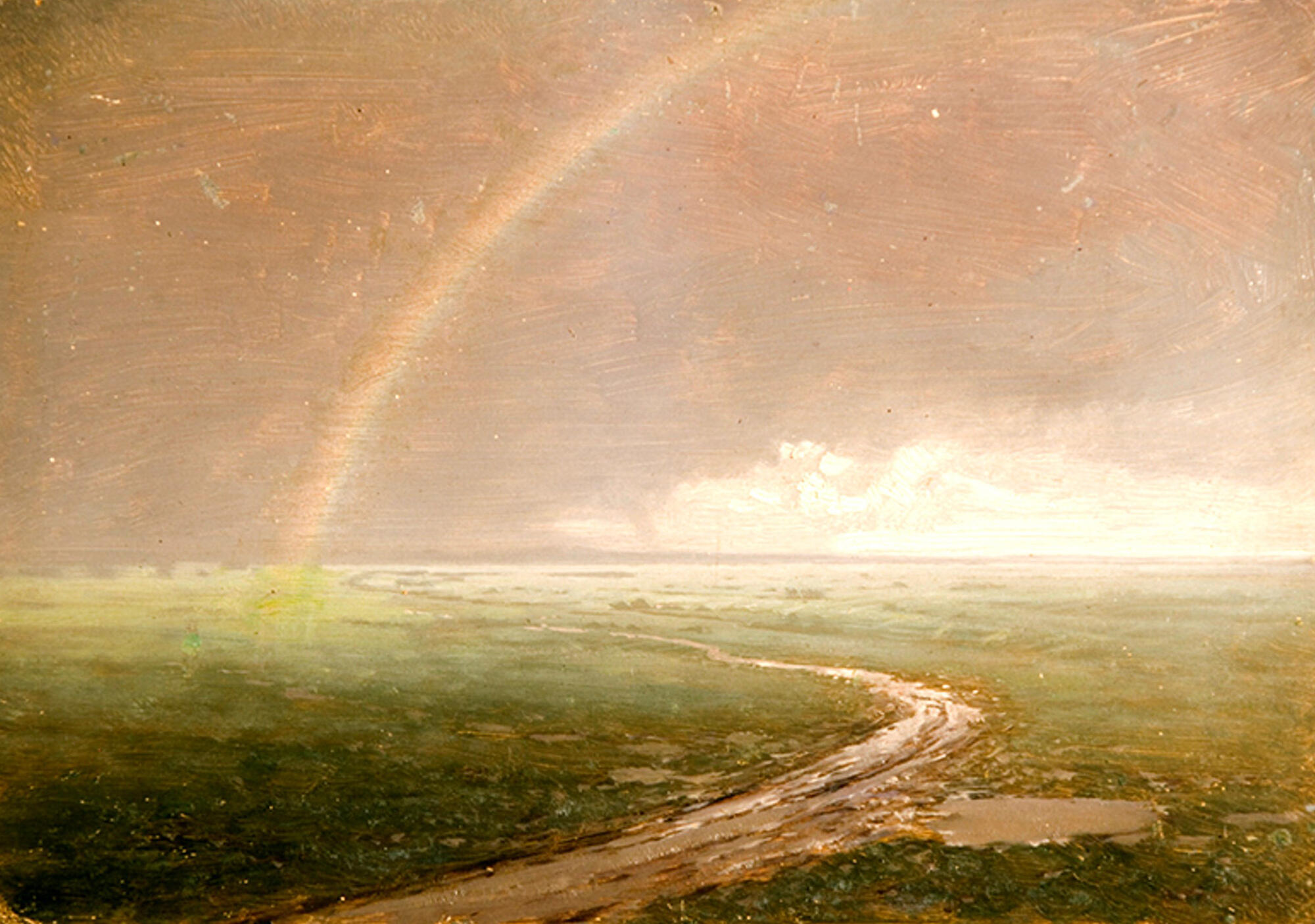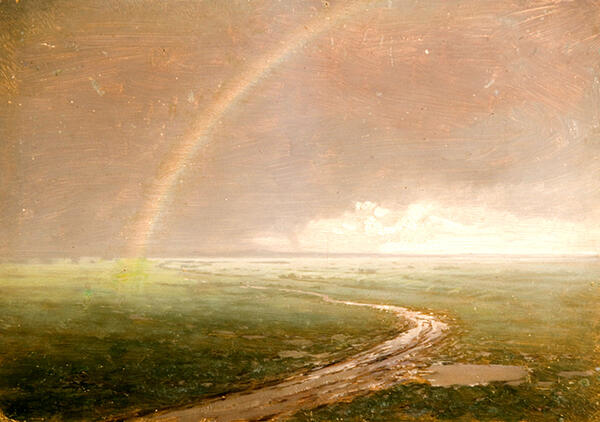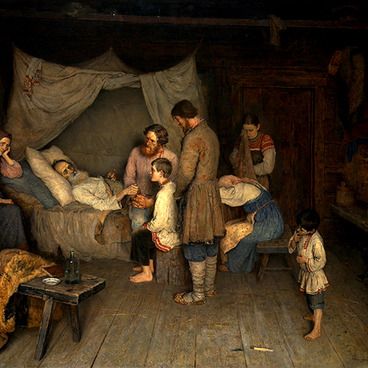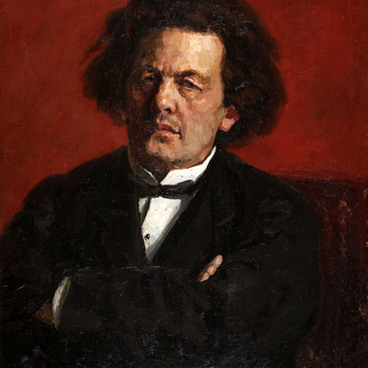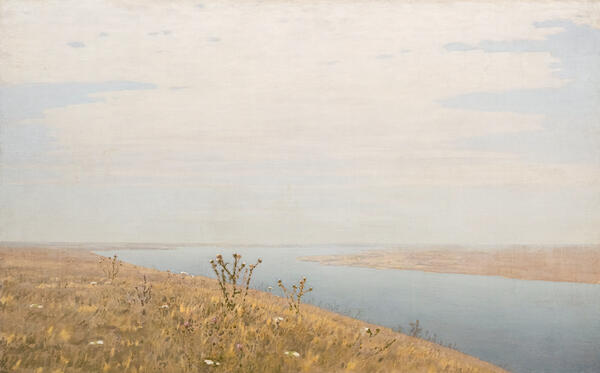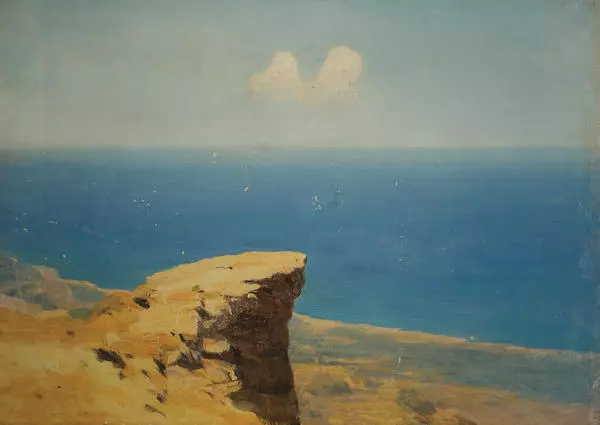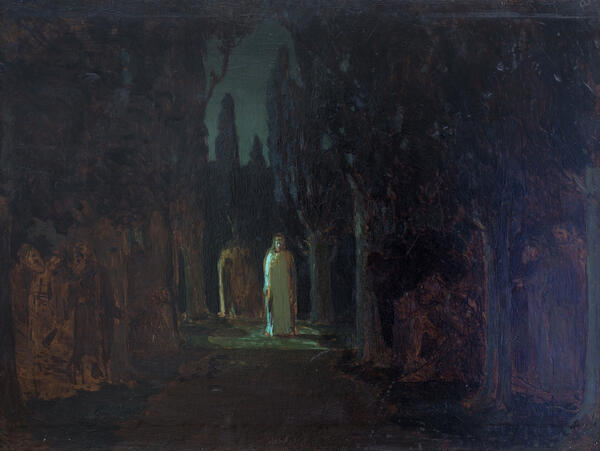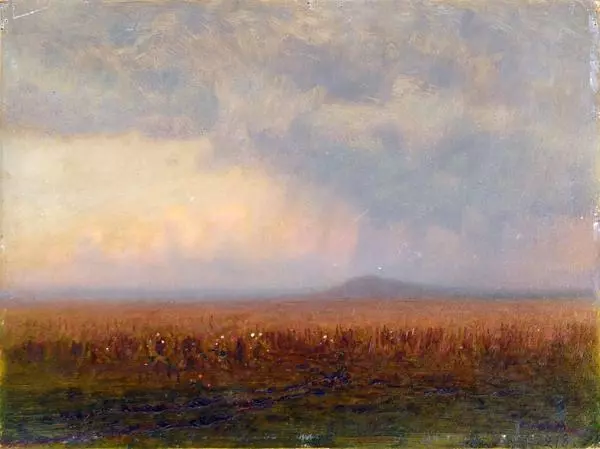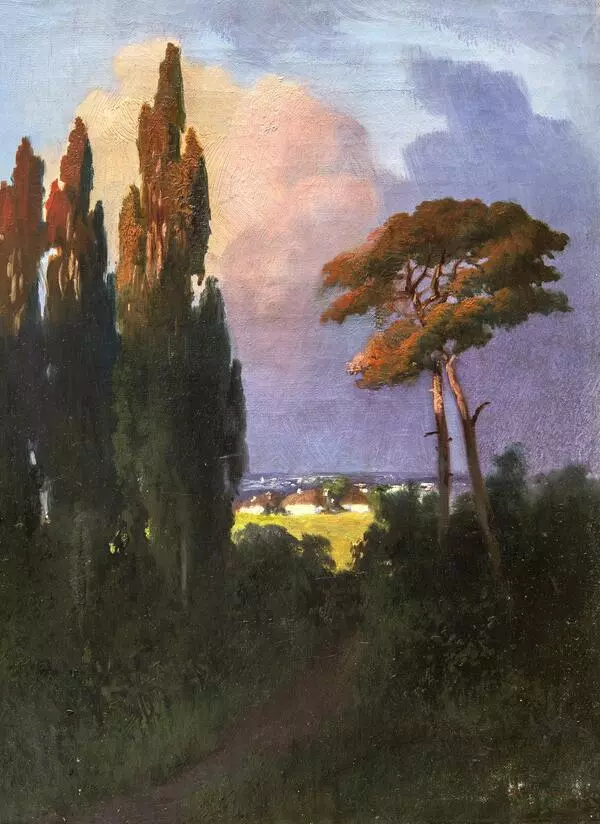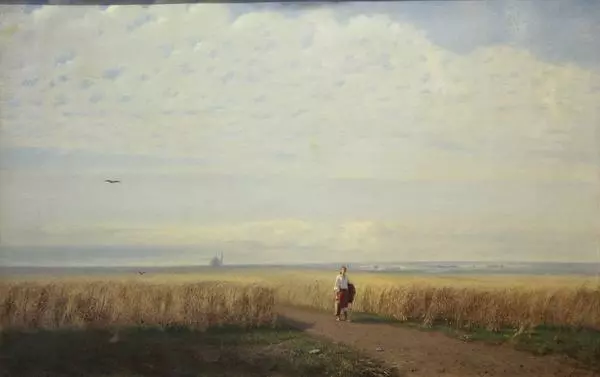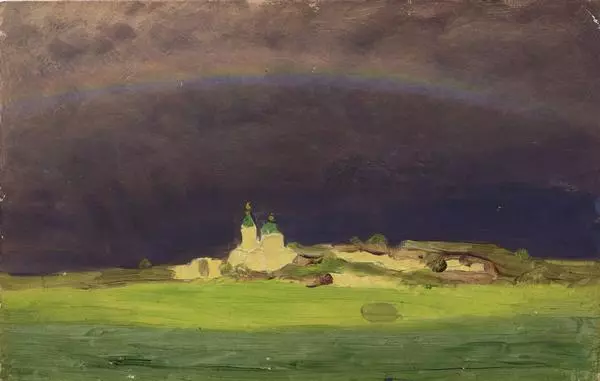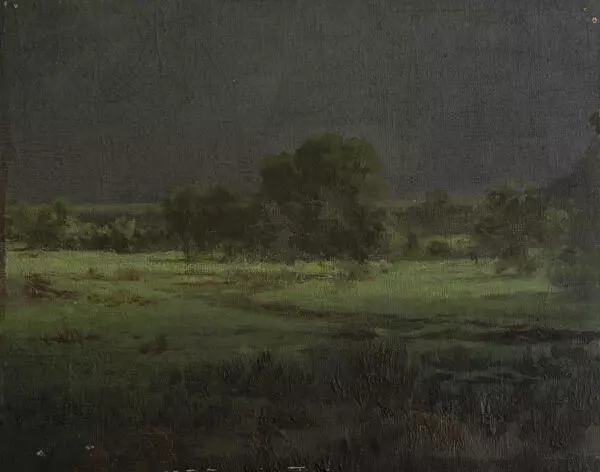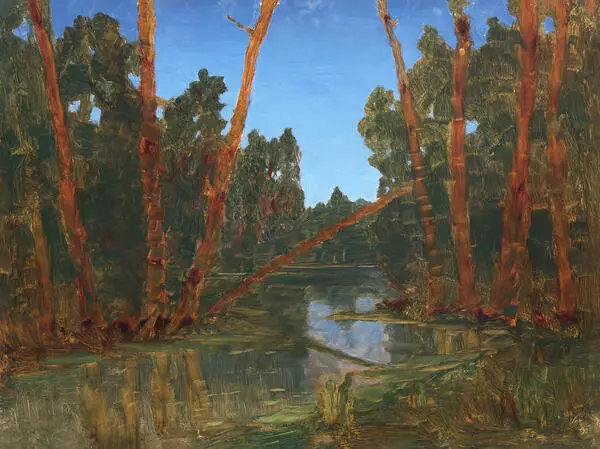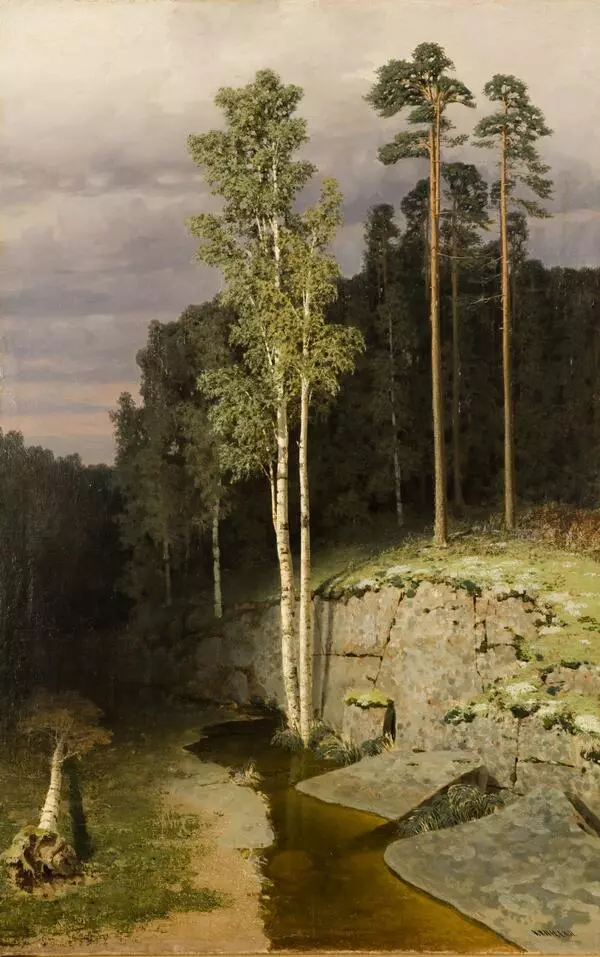The composition of this expressive study is more modest and concise, but it makes the same vivid and strong impression and allows you to get an idea about the later period of the artist’s work. This time was marked by indefatigable creative searches and Kuindzhi’s long silence. After the pronounced success of his works in the 1880s such as ‘Evening in Ukraine’, " The Birch Grove’, “Moonlit Night on the Dnieper, ” the artist did not present new paintings to the general public until the beginning of the next century.
With “Rainbow, ” the artist”s silence was broken, and the audience saw another Kuindzhi. Although the new work was compositionally and thematically consonant with the earlier work “After the Rain” (1879), the artist’s coloristic techniques changed significantly. The artist worked on the creation of ‘Rainbow’ for 5 years. During this period, he painted many studies, in which the artist showed himself to be an unsurpassed master of light and color effects. A study from the collection of the Taganrog Art Museum reflects an interesting process of the creative search of painter looking for the only true way to unravel the magic of sunlight.
In a small but exceptionally charming work, one can clearly see the artist’s interest in impressionism. Although Kuindzhi did not use classical impressionistic techniques, he also tried to find similar ways of conveying light and atmospheric environment.
Kuindzhi’s studies ‘Rainbow’ and ‘Waves’ were transferred to the city museum collection after the memorial exhibition of the artist, organized by the Kuindzhi Society in Saint Petersburg. In 1914 the artist’s works were distributed among the provincial museums of Russia.
With “Rainbow, ” the artist”s silence was broken, and the audience saw another Kuindzhi. Although the new work was compositionally and thematically consonant with the earlier work “After the Rain” (1879), the artist’s coloristic techniques changed significantly. The artist worked on the creation of ‘Rainbow’ for 5 years. During this period, he painted many studies, in which the artist showed himself to be an unsurpassed master of light and color effects. A study from the collection of the Taganrog Art Museum reflects an interesting process of the creative search of painter looking for the only true way to unravel the magic of sunlight.
In a small but exceptionally charming work, one can clearly see the artist’s interest in impressionism. Although Kuindzhi did not use classical impressionistic techniques, he also tried to find similar ways of conveying light and atmospheric environment.
Kuindzhi’s studies ‘Rainbow’ and ‘Waves’ were transferred to the city museum collection after the memorial exhibition of the artist, organized by the Kuindzhi Society in Saint Petersburg. In 1914 the artist’s works were distributed among the provincial museums of Russia.
